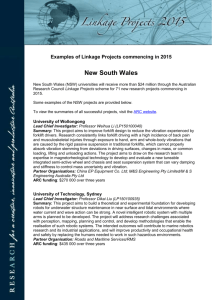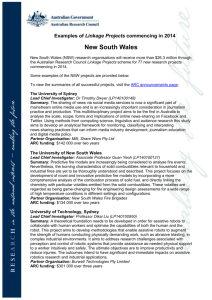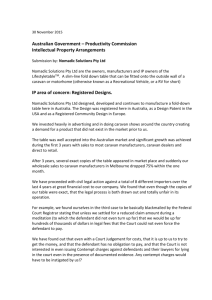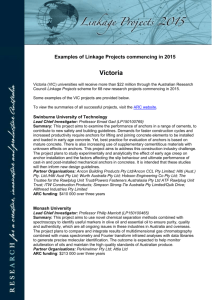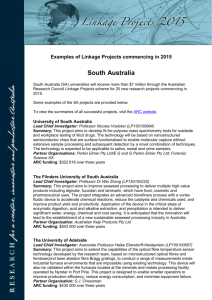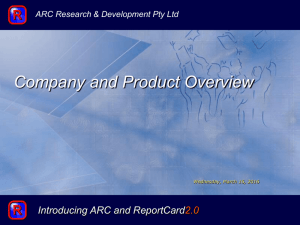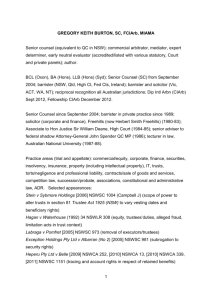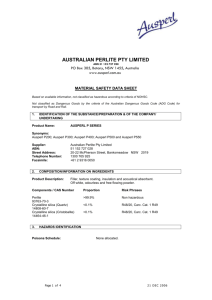Word Format - Australian Research Council
advertisement
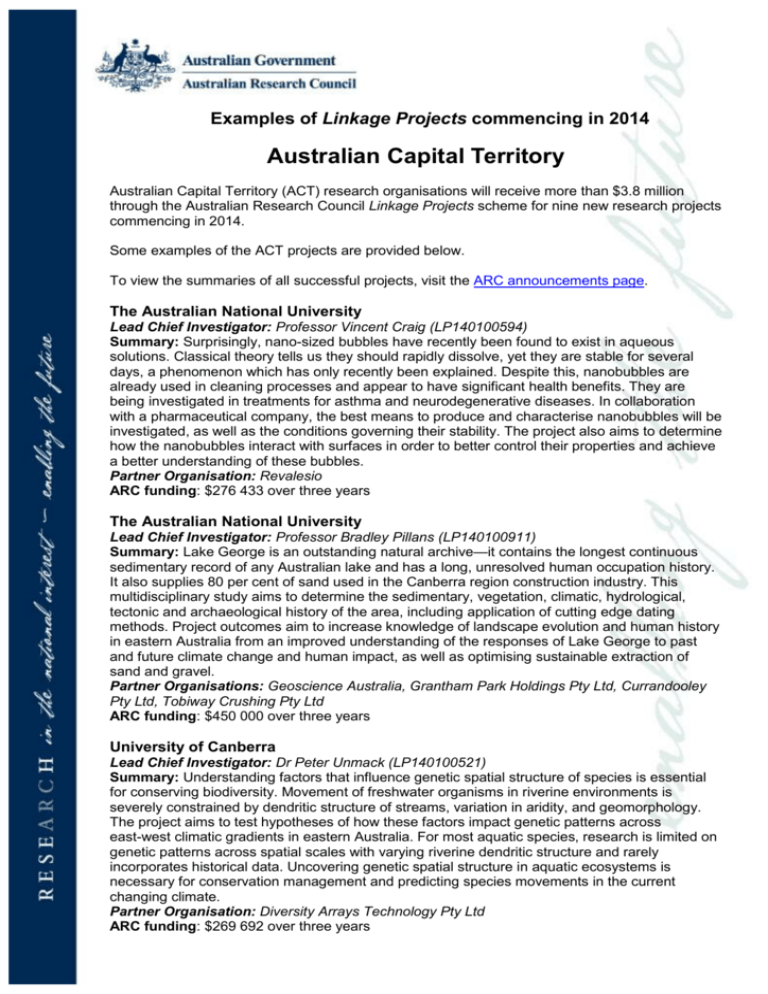
Examples of Linkage Projects commencing in 2014 Australian Capital Territory Australian Capital Territory (ACT) research organisations will receive more than $3.8 million through the Australian Research Council Linkage Projects scheme for nine new research projects commencing in 2014. Some examples of the ACT projects are provided below. To view the summaries of all successful projects, visit the ARC announcements page. The Australian National University Lead Chief Investigator: Professor Vincent Craig (LP140100594) Summary: Surprisingly, nano-sized bubbles have recently been found to exist in aqueous solutions. Classical theory tells us they should rapidly dissolve, yet they are stable for several days, a phenomenon which has only recently been explained. Despite this, nanobubbles are already used in cleaning processes and appear to have significant health benefits. They are being investigated in treatments for asthma and neurodegenerative diseases. In collaboration with a pharmaceutical company, the best means to produce and characterise nanobubbles will be investigated, as well as the conditions governing their stability. The project also aims to determine how the nanobubbles interact with surfaces in order to better control their properties and achieve a better understanding of these bubbles. Partner Organisation: Revalesio ARC funding: $276 433 over three years The Australian National University Lead Chief Investigator: Professor Bradley Pillans (LP140100911) Summary: Lake George is an outstanding natural archive—it contains the longest continuous sedimentary record of any Australian lake and has a long, unresolved human occupation history. It also supplies 80 per cent of sand used in the Canberra region construction industry. This multidisciplinary study aims to determine the sedimentary, vegetation, climatic, hydrological, tectonic and archaeological history of the area, including application of cutting edge dating methods. Project outcomes aim to increase knowledge of landscape evolution and human history in eastern Australia from an improved understanding of the responses of Lake George to past and future climate change and human impact, as well as optimising sustainable extraction of sand and gravel. Partner Organisations: Geoscience Australia, Grantham Park Holdings Pty Ltd, Currandooley Pty Ltd, Tobiway Crushing Pty Ltd ARC funding: $450 000 over three years University of Canberra Lead Chief Investigator: Dr Peter Unmack (LP140100521) Summary: Understanding factors that influence genetic spatial structure of species is essential for conserving biodiversity. Movement of freshwater organisms in riverine environments is severely constrained by dendritic structure of streams, variation in aridity, and geomorphology. The project aims to test hypotheses of how these factors impact genetic patterns across east-west climatic gradients in eastern Australia. For most aquatic species, research is limited on genetic patterns across spatial scales with varying riverine dendritic structure and rarely incorporates historical data. Uncovering genetic spatial structure in aquatic ecosystems is necessary for conservation management and predicting species movements in the current changing climate. Partner Organisation: Diversity Arrays Technology Pty Ltd ARC funding: $269 692 over three years

